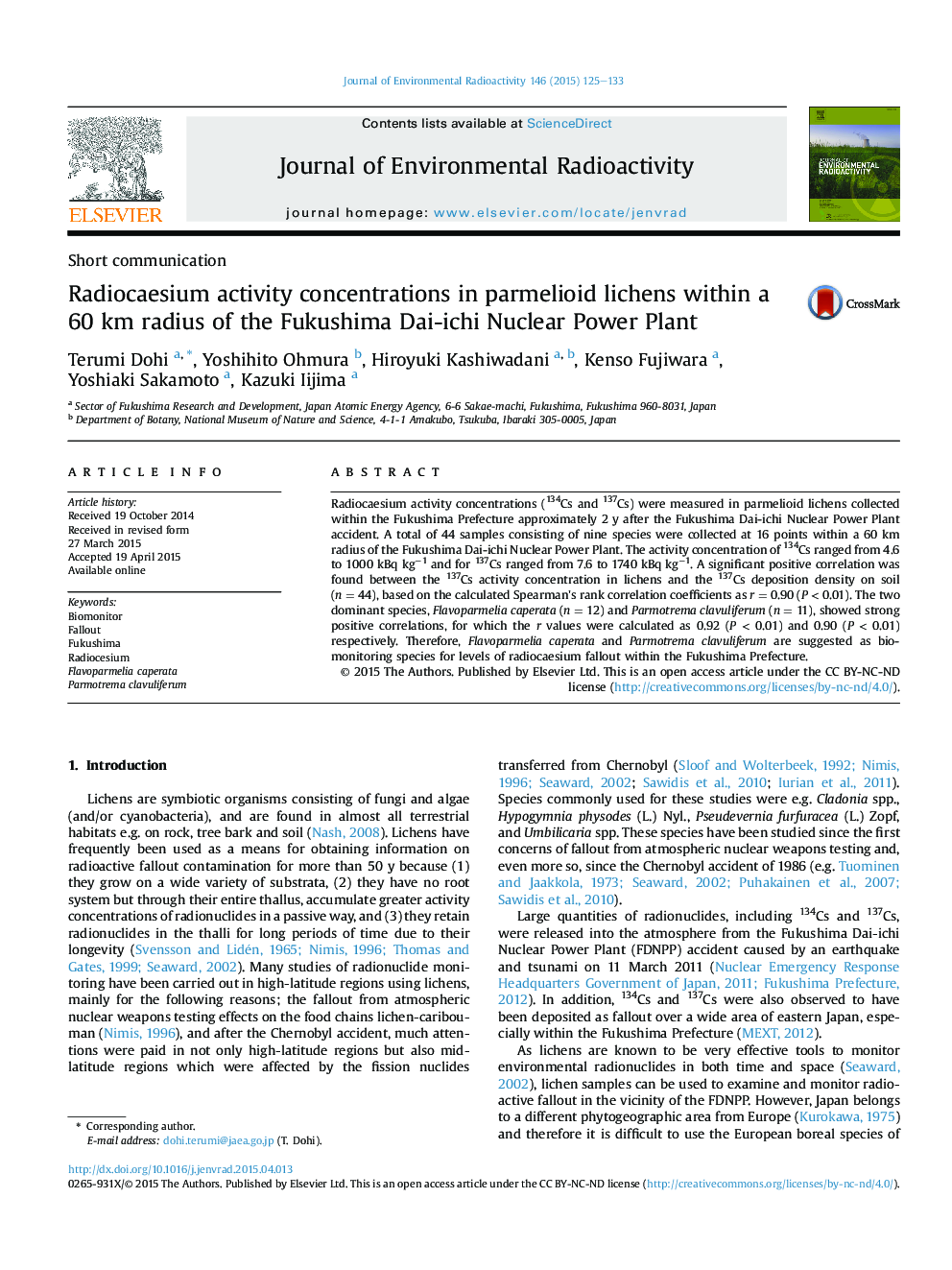| Article ID | Journal | Published Year | Pages | File Type |
|---|---|---|---|---|
| 8082172 | Journal of Environmental Radioactivity | 2015 | 9 Pages |
Abstract
Radiocaesium activity concentrations (134Cs and 137Cs) were measured in parmelioid lichens collected within the Fukushima Prefecture approximately 2 y after the Fukushima Dai-ichi Nuclear Power Plant accident. A total of 44 samples consisting of nine species were collected at 16 points within a 60 km radius of the Fukushima Dai-ichi Nuclear Power Plant. The activity concentration of 134Cs ranged from 4.6 to 1000 kBq kgâ1 and for 137Cs ranged from 7.6 to 1740 kBq kgâ1. A significant positive correlation was found between the 137Cs activity concentration in lichens and the 137Cs deposition density on soil (n = 44), based on the calculated Spearman's rank correlation coefficients as r = 0.90 (P < 0.01). The two dominant species, Flavoparmelia caperata (n = 12) and Parmotrema clavuliferum (n = 11), showed strong positive correlations, for which the r values were calculated as 0.92 (P < 0.01) and 0.90 (P < 0.01) respectively. Therefore, Flavoparmelia caperata and Parmotrema clavuliferum are suggested as biomonitoring species for levels of radiocaesium fallout within the Fukushima Prefecture.
Related Topics
Physical Sciences and Engineering
Energy
Nuclear Energy and Engineering
Authors
Terumi Dohi, Yoshihito Ohmura, Hiroyuki Kashiwadani, Kenso Fujiwara, Yoshiaki Sakamoto, Kazuki Iijima,
